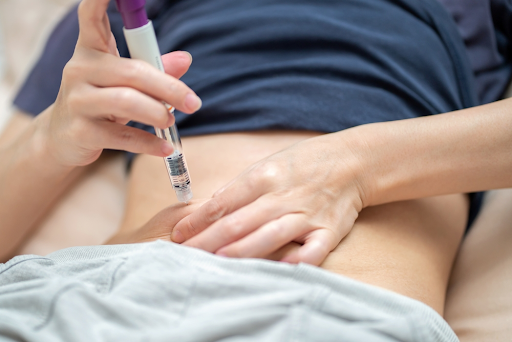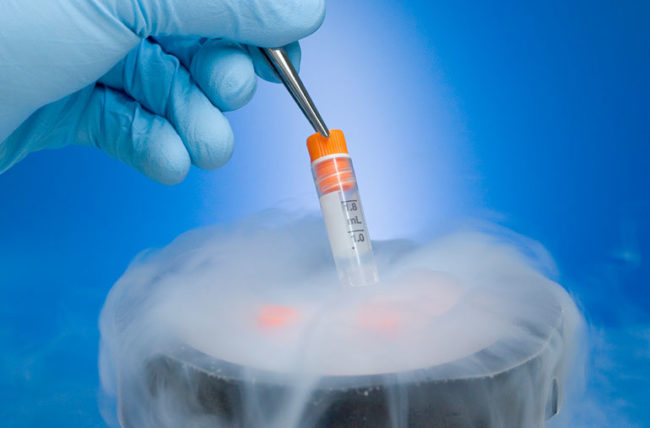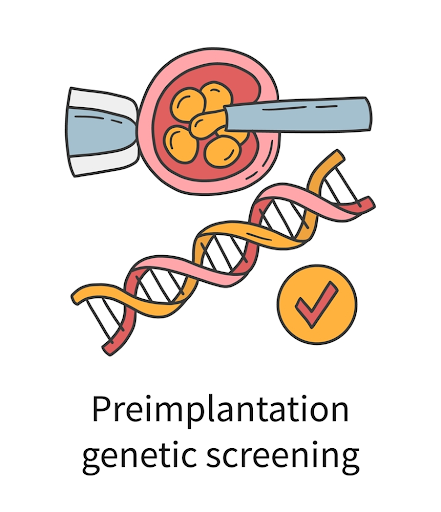IVF Ovarian Stimulation Process
In vitro fertilization is a form of assisted reproductive technology (ART) in which sperm cells are used to fertilize eggs outside of the body in a laboratory. It is a complex process with several steps which culminate in producing an embryo and transferring the embryo into a uterus. Pregnancy is achieved after the embryo implants into the uterus. There are thousands of ovarian follicles in a woman’s ovaries, each containing an oocyte (a follicle is a small fluid-filled cyst). Several of the follicles start to form during each menstrual cycle, and each one is capable of delivering a mature egg at ovulation. Eventually, only the dominant follicle which grows faster than the others will mature and ovulate. The dominant follicle releases an egg during ovulation, and if the egg is not fertilized, the woman experiences menstruation about 14 days after the ovulation.

What is the reason for IVF?
There are many reasons some couples decide to use IVF, but they are typically motivated by their struggles to conceive and carry a child to term. Some people try IVF after other fertility methods have failed or if they are advanced in age and are finding it difficult to naturally conceive. IVF can also be an option for same-sex couples or single individuals who wish to build their families. Some of the reasons for IVF include:
- Endometriosis
- Issues with the uterus
- Idiopathic infertility
- Uterine fibroids
- Blocked or damaged fallopian tubes
- Gestational surrogacy
- Low sperm count
- Using an egg donor
How long does IVF take?
IVF is a complicated process that involves multiple steps. The process usually lasts about a month or a month and a half. This usually is from the time before the egg retrieval to the time they test positive for pregnancy.
What are the steps of the IVF process?
The IVF process involves many steps, the first being the synchronization of the cycle of the woman. After the synchronization, the woman’s ovaries are then stimulated. After the stimulation, the eggs are harvested and fertilized. The final step involves the transfer of the formed embryo to the uterus and the commencement of pregnancy. Before the start of the process, the couple will undergo extensive testing to determine their fertility levels. The testing will also include blood tests which show the baseline levels of the levels of hormones in the body. This will allow the doctor to be able to plan the treatment regimen that is appropriate for the couple.
Synchronization – This is done before the start of the IVF treatment. Contraceptive pills like progesterone are prescribed for the individual. They are used to mainly control the timing of the menstrual cycle, and they can also prevent the development of ovarian cysts. This allows the doctor in charge to control the stimulation process and maximize the eggs that will be retrieved during the harvesting process. The doctor prescribes some people estrogen, while others are given both progesterone and estrogen.
What is ovarian stimulation?
This is the second major stage of IVF fertility treatment. The aim of this is to mature as many follicles as possible which will lead to harvesting as many eggs as possible from the ovaries of the woman. The harvesting of many eggs will lead to more chances of eggs being fertilized and transferred to the uterus. The stimulation phase involves the administration of medication for about 8-14 days in order to facilitate the production of as many eggs as possible. The process may take longer if the follicles are slower to mature.
The medications are targeted at two key hormones, the follicle-stimulating hormone, and the luteinizing hormone. The follicle-stimulating hormone stimulates the development of the ovarian follicles during the menstruation cycle. In the normal setting, the non-dominant follicles usually die off as the cycle progresses. The FSH injections maintain higher levels of FSH in the body, allowing for the ovaries to produce more mature eggs. The luteinizing hormone just before ovulation is triggered to spike by higher levels of estrogen. This spike leads to the ovulation of the follicles. A trigger injection with a high dose of human chorionic gonadotropin, which induces ovulation, initiates the ovarian stimulation procedure. The eggs are harvested just before ovulation occurs.

What to expect with ovarian stimulation?
The entire process hinges on accurate timing and a high degree of care. An issue can cause the entire process to be restarted. The individual will most likely be self-medicating with a combination of pills and injections. It is very important to be prompt about the administration, but in cases where the individual forgets, then they should seek help and advice. The individual will also undergo regular blood tests to measure the hormones in the body. The hormones are usually adjusted daily to ensure that enough follicles are stimulated and to reduce the risk of ovarian hyperstimulation syndrome.
An ultrasound to monitor the growth of the follicles within the ovaries will usually be requested by the doctor. The individual should also bear in mind that they will need to go regularly for tests and that they will be in constant communication with their medical team. Stress and mood swings are also common during ovarian stimulation. Hormonal changes in the body and the stress of the IVF procedure itself can both contribute to mood swings.
What are the side effects of ovarian stimulation?
Some of the side effects which can be expected during the ovarian stimulation process include the following:
- Mood swings and depression
- Breast tenderness
- Swelling or rashes at the site of the injections
- Ovarian hyperstimulation syndrome which can cause bloating, abdominal pain, and enlarged ovaries.
What are the tips for a successful ovarian stimulation phase?
Some considerations to be made when considering IVF and the ovarian stimulation process are:
- Have an understanding that the process is usually very stressful and have a proper preparation
- The individual should always seek clarification wherever they are unsure
- The medical team is crucial; there should be open communication between the individual and their medical team
The information provided in this blog is for educational purposes only and should not be considered as medical advice. It is not intended to replace professional medical consultation, diagnosis, or treatment. Always consult with a qualified healthcare provider before making any decisions regarding your health. Read more







